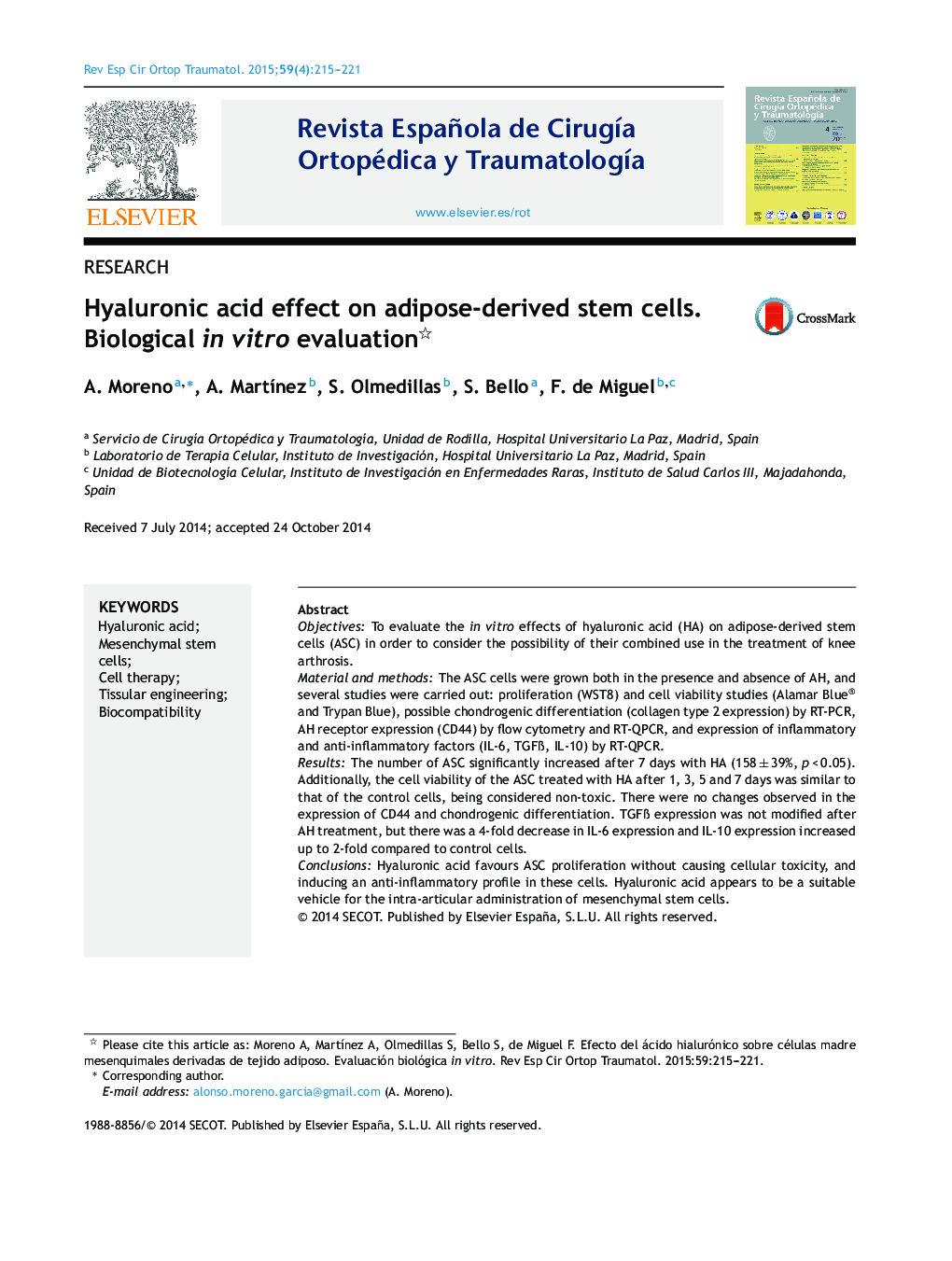| Article ID | Journal | Published Year | Pages | File Type |
|---|---|---|---|---|
| 4087100 | Revista Española de Cirugía Ortopédica y Traumatología (English Edition) | 2015 | 7 Pages |
ObjectivesTo evaluate the in vitro effects of hyaluronic acid (HA) on adipose-derived stem cells (ASC) in order to consider the possibility of their combined use in the treatment of knee arthrosis.Material and methodsThe ASC cells were grown both in the presence and absence of AH, and several studies were carried out: proliferation (WST8) and cell viability studies (Alamar Blue® and Trypan Blue), possible chondrogenic differentiation (collagen type 2 expression) by RT-PCR, AH receptor expression (CD44) by flow cytometry and RT-QPCR, and expression of inflammatory and anti-inflammatory factors (IL-6, TGFß, IL-10) by RT-QPCR.ResultsThe number of ASC significantly increased after 7 days with HA (158 ± 39%, p < 0.05). Additionally, the cell viability of the ASC treated with HA after 1, 3, 5 and 7 days was similar to that of the control cells, being considered non-toxic. There were no changes observed in the expression of CD44 and chondrogenic differentiation. TGFß expression was not modified after AH treatment, but there was a 4-fold decrease in IL-6 expression and IL-10 expression increased up to 2-fold compared to control cells.ConclusionsHyaluronic acid favours ASC proliferation without causing cellular toxicity, and inducing an anti-inflammatory profile in these cells. Hyaluronic acid appears to be a suitable vehicle for the intra-articular administration of mesenchymal stem cells.
ResumenObjetivoEvaluar in vitro los efectos del ácido hialurónico (AH) en células madre mesenquimales derivadas de tejido adiposo (ASC) ante su posible uso combinado en el tratamiento de la artrosis de rodilla.Material y métodoLas ASC fueron cultivadas en presencia o ausencia de AH, realizando estudios de proliferación (ensayo con WST8) y viabilidad celular (Alamar Blue® y Trypan Blue), posible diferenciación condrogénica de las células (expresión de colágeno tipo 2) por RT-PCR, así como el estudio de la expresión del receptor de AH (CD44) por citometría de flujo y RT-QPCR, y factores pro- y antiinflamatorios (IL-6, TGFß, IL-10) por RT-QPCR.ResultadosEl número de ASC aumentó significativamente tras 7 días con AH (158 ± 39%, p < 0,05). Así mismo, la viabilidad de las ASC tratadas con AH a uno, 3, 5 y 7 días fue similar a la de las células control, considerándose que el tratamiento con AH no resultaba tóxico. No se observaron cambios en la expresión de CD44 tras el tratamiento con AH ni tampoco la inducción a la diferenciación condrogénica. La expresión de TGFß no se modificó con el tratamiento con AH; sin embargo, las ASC cultivadas con AH mostraron un incremento de 2 veces en la expresión de IL-10 y una reducción sobre el valour basal de 4 veces en la expresión de IL-6.ConclusionesEl AH favorece la proliferación de las ASC en cultivo, no presentando toxicidad celular, e induciendo un perfil antiinflamatorio en estas células. Consideramos al AH un vehículo adecuado para la administración intraarticular de células madre mesenquimales.
